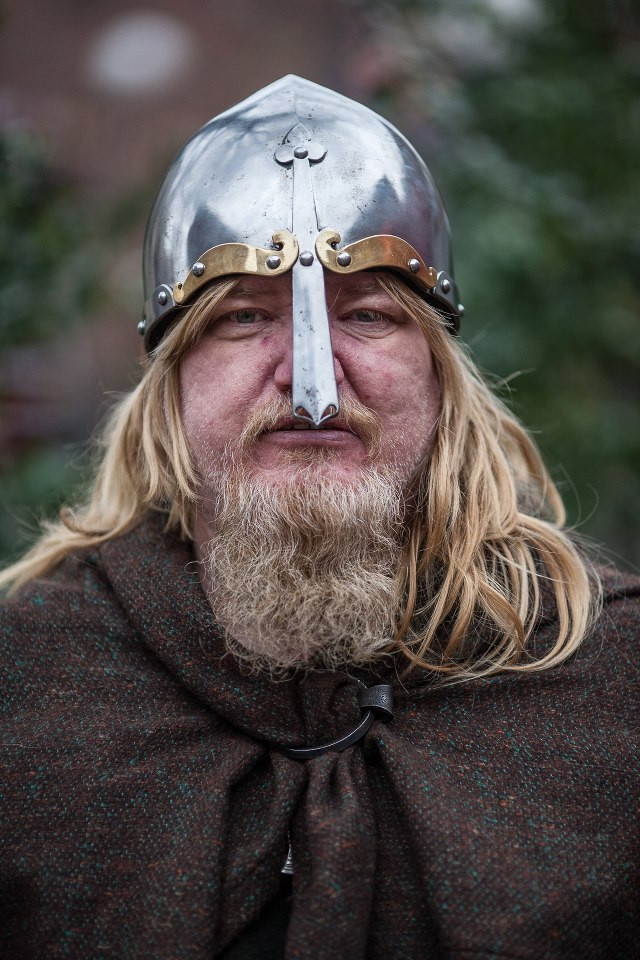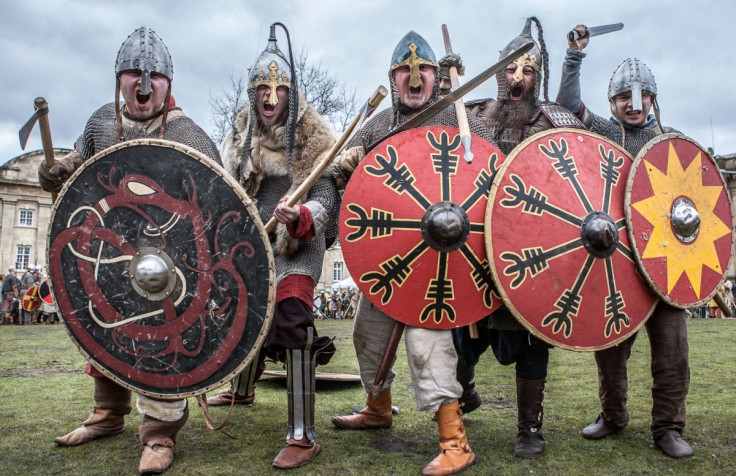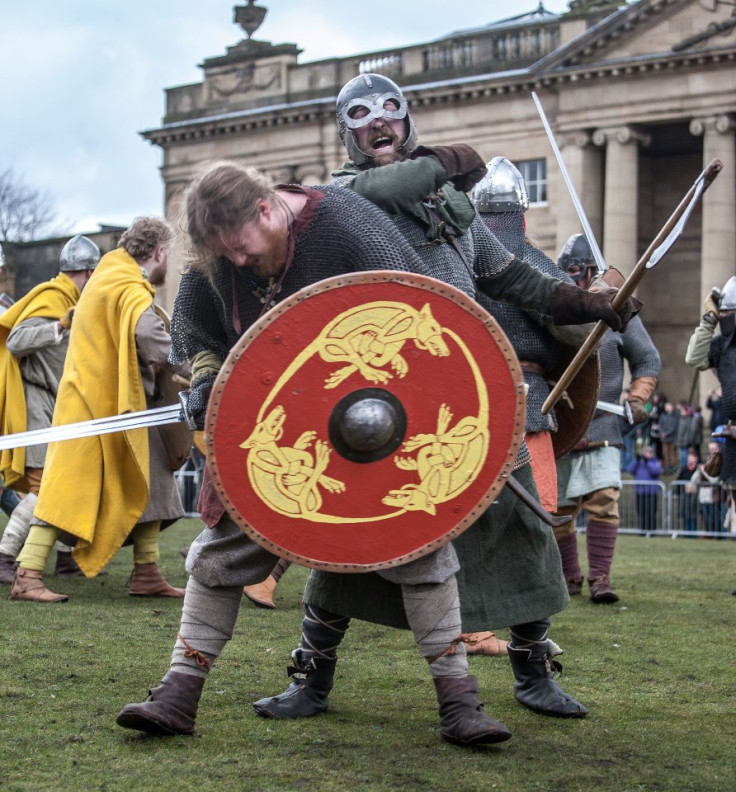A Viking Speaks Out About Fighting, Jorvik and Welcoming the Ragnarok Apocalypse

The world will end in less than 24 hours, if the Vikings are to be believed. Ragnarok, or the apocalypse, is an important part of Norse mythology that is scheduled to take place on 22 February.
The impending Viking apocalypse coincides with this year's Jorvik festival. The largest Viking festival in Europe, it's an annual celebration that takes place every February in York and features falconry, archery, dramatic performances, and a big battle at the end.
Ahead of Ragnarok we spoke to a Viking re-enactor in York about the Jorvik festival, being a Viking, and the upcoming apocalypse.
Ragnarok, the Viking apocalypse, is scheduled to occur tomorrow. What's going to happen?
Ragnarok is a great battle that marks the death of the Norse gods and rebirth of the universe.
Valhalla, the Viking version of heaven, is a waiting room where warriors get to fight and drink with the gods before the Ragnarok, or rebirth of the universe, happens.
Vikings do not fear the apocalypse, but welcome it. They did not see it as the end of days, just the end of a chapter in the universe, with all life starting anew.
We like to think of Vikings as these uncivilised pagan warriors who went about raping and pillaging, but in Scandinavian York itself most Vikings would not have believed in Ragnarok as they were Christian. During the period of Viking conquest between the 8th and 11th centuries the pagan invaders gradually converted to Christianity roughly parallel with their settlement in the UK. But religious belief was a lot more volatile then, and people's faith would be an amalgamation of various sources that would change depending on the way the wind blows. Nothing was set in stone.
Though most Vikings were Christian at this point, they would have been aware of Ragnarok and other pagan celebrations and would still have these formed as part of their cultural tradition.

You and many other Vikings will be celebrating the event at this year's Jorvik Festival. What's set to take place?
Thousands of re-enactors, tourists and traders will flock to York for the celebrations. For traders, it's one of the biggest events of the year. They'll come from as far as Russia and Poland to sell their goods, not just to tourists, but also many niche things for re-enactors that are hard to acquire in the UK.
Vikings do not fear the apocalypse, but welcome it. They did not see it as the end of days, just the end of a chapter in the universe, with all life starting anew.
The city will be full of craft displays, and a living history area where people can try some of the Viking gear, wearing helmets and picking up swords and shields.
The main event is of course the big battle, which this year takes place at Clifford's Tower. Vikings are pitted against Saxons in a battle that will involve hundreds of people. The event ends with archers setting alight a Viking longboat by shooting it with flaming arrows.
Why do you take part in re-enactments? Is it because it's educational, or just because it's fun?
Re-enactments are an incredibly useful educational tool as they offer an experience of history that's too easy to take for granted.
We have material and literary evidence of the Vikings, but re-enactment, the process of trying to live the way someone did in the past, can be far more engrossing for some people in order to imagine the past.
I would not call myself a re-enactor but a reconstruction archaeologist. I think artefacts should not just be seen, but used as they were in the past, if we are to truly understand them.
For example last week I cooked a stew in an iron pot over an open fire just as the Vikings would have done, and it helped me appreciate how they cooked and ate their meals. Re-enactment is about a lot more than just fighting.

But fighting is the best part right? What's it like to take to the battlefield?
Well a lot of it is standing around in a field waiting for the battle to begin, and it can be very, very cold! But once the battle starts the adrenaline kicks in, and suddenly the cold doesn't matter anymore.
In order to extend the fight and entertain the crowd, the first part will be just show fighting. You're not fighting properly, just trying to make it look good so as to play up for the public.

Then the real fight begins. It's dark, you can't really see what you're doing; it's absolute chaos.
But it's not just individuals hitting each other with iron bars, there's an order to it as well. You really learn to appreciate the people either side of you, the importance of maintaining a formation, and value how an army must remain disciplined otherwise face being cut to shreds.
You're not trying to kill someone, but fight competitively in the style that mimics how the Vikings themselves would have fought.
There's a fighting etiquette as well. If you're hit in the body fair and square, you should go down. But hitting someone on the head isn't allowed, and if you do, even by mistake, you should open up your body and allow yourself to be struck.
Once you've been hit you have to lie down and play dead, and that's when you start to notice the cold again. You end up shivering on the muddy grass whilst the fighting continues above you.
© Copyright IBTimes 2025. All rights reserved.






















